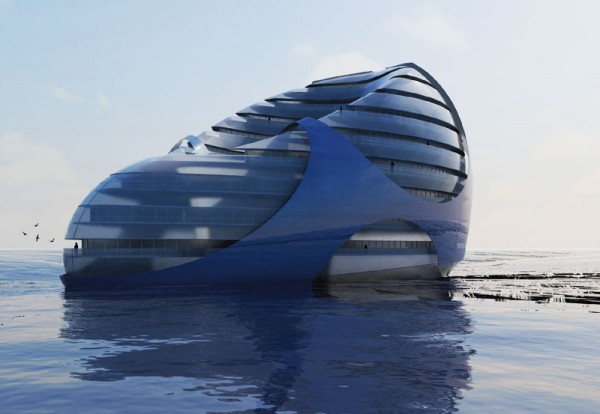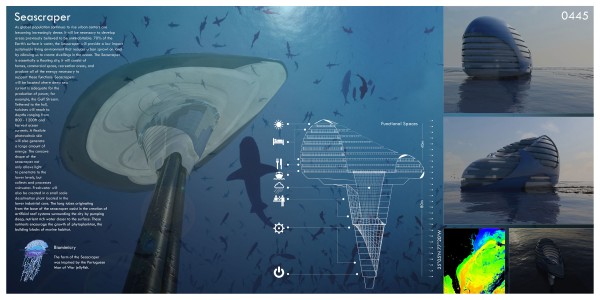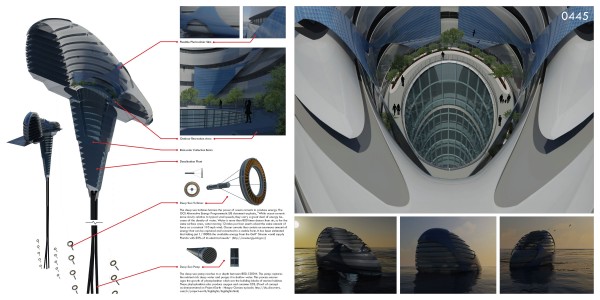Green Skyscrapers
In the next few days we will showcase 25 innovative proposals
for green skyscrapers. These projects were submitted for the Annual
Skyscraper Competition from 2006 to 2009.
Project 25 of 25
William Erwin, Dan Fletcher
United States
 Seascraper
As global population continues to rise, urban centers are becoming
increasingly dense. It will be necessary to develop areas previously
believed to be uninhabitable. Seventy percent of the Earth’s surface is
water; the Seascraper will provide a low impact sustainable living
environment that reduces urban sprawl on land by allowing us to create
dwellings in the ocean. The Seascraper is essentially a floating city.
It will consist of homes, commercial space, and recreation areas. It
will produce all of the energy necessary to support these functions.
Seascrapers will be located where deep sea current is adequate for
production of power, for example, the Gulf Stream. Tethered to the hull,
turbines will reach to depths ranging from 800 to 1200 feet and harvest
ocean currents. A flexible photovoltaic skin will also capture the sun
rays. The concave shape of the seascraper not only allows light to
penetrate the lower levels, but collects and processes rainwater.
Freshwater will also be created in a desalination plant located in the
lower industrial core. The long tubes originating from the base assist
in the creation of a reef system surrounding the city by pumping deep,
nutrient rich water closer to the surface. These nutrients encourage the
growth of phytoplankton, the building blocks of marine habitats.
 Seascraper - 1
 Seascraper - 2
Источник: http://www.evolo.us/architecture/seascraper-floating-city/ | 
